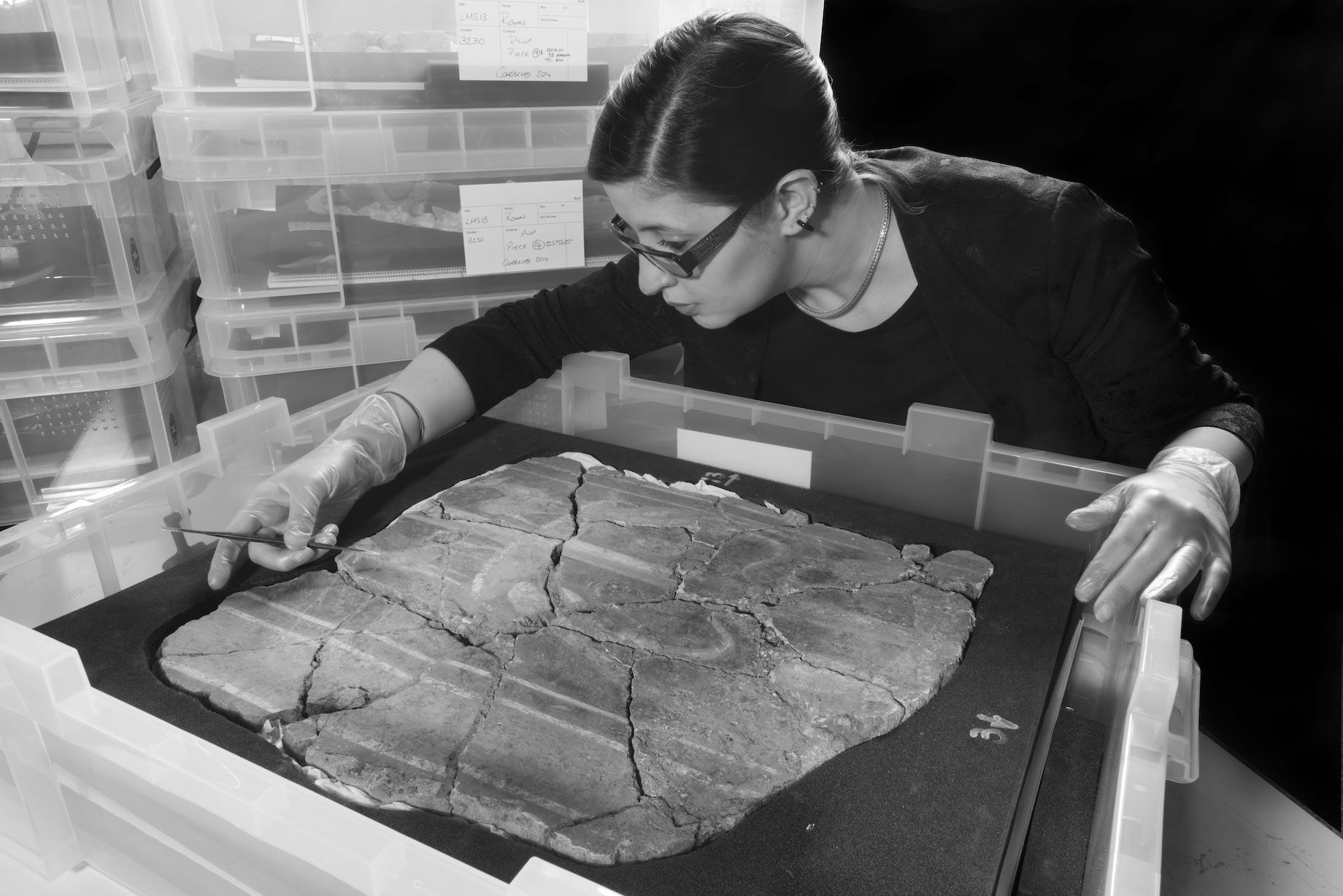This article was originally published in February 2018.
An ornate fresco that once adorned the residence of a wealthy Roman citizen was discovered by our archaeologists at 21 Lime Street, in London in 2016. They uncovered the fresco six metres below street level, whilst undertaking fieldwork for a new office development. Dating to the late 1st century AD, and the first decades of London, it is one of the earliest surviving frescos from Roman Britain.
Thanks to a huge Roman construction project, the fate of this rare wall painting was literally sealed in the ground. In AD 100, construction of the 2nd Forum Basilica, the main civic centre for the city and the largest Roman building ever built north of the Alps, began. In advance of construction of the Forum the area was flattened. The painted wall was deliberately toppled and the Forum immediately built over it, incredibly preserving the fresco for nearly 2000 years.
Discovered face down, the fresco was identified from the distinctive markings of the keyed daub onto which the plaster was attached. The fragile remains, surviving to a width of nearly 2.5 metres and a height of over 1.5 metres, were carefully removed from the site by MOLA’s archaeological conservators who lifted the fresco in 16 sections. Each section was supported, undercut and block lifted so that soil encased and protected the plaster. Back in the lab the conservators worked quickly to micro-excavate the soil whilst it was still damp, to expose the millimetre-thin painted surface beneath.
For our experts the elaborate fresco reveals something of the fashions and styles of the first wealthy Londoners. The painting is likely to have decorated a reception room where guests were greeted and entertained.

A section of a decorative fresco, dating to the 1st-century AD Roman Britain
The central section, on a background of green and black vertical panels, depicts deer nibbling trees, alongside birds, fruit and a vine woven around a candelabrum. Red panels, bordered with cream lines, surround the main decorative scheme. The fresco was hand-painted by a skilled artist in natural earth pigments, except one area of red on the twisting vine stem which is picked out in cinnabar, an expensive mercuric sulphide pigment that had to be mined in Spain.
Fascinatingly, a slight error in the design reveals that the craftsman who painted the fresco made a mistake. It suggests that there was more than one person painting the wall and that they may have been working to a pre-prepared template. The mistake could only have been corrected by repainting the whole middle panel.
Although small fragments of Roman wall plaster have been found in London, complete collapsed wall paintings are extremely rare and the 21 Lime Street example is one of the earliest known from Britain.
Specialists at MOLA have since studied the archaeological records from the dig to build a picture of what the area looked like in the Roman period and how it developed over almost 2,000 years of London’s history.
Main image: MOLA archaeological conservator, Luisa Duart with a section of decorated Roman wall.
Both images copyright MOLA







